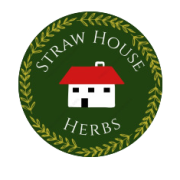Lately I’ve been seeing collections of favorite seeds by garden YouTubers, bloggers, and writers. Well, those who know me, know that I am made up almost entirely of opinions; so, creating my own list seemed inevitable. I have been gardening for about 40 years now and have tried and true favorites I order year after year. So here goes, in no special order, “Kat Favs.”
Mokum carrot is the first to come to mind. This carrot is early, crisp and full of carroty flavor not just sweetness. In my short zone 4b/5a garden, I get a harvest from both early spring and summer sowings. My other carrot fav is the heirloom Red-cored Chantenay. Chantenay types have a tapered root and fat top giving it an attractive old-fashioned stout conical shape. They aren’t just pretty to look at though, they are my go to for winter stews. Their carrot flavor stands up to the richest gravy. These keep all winter in the ground with just a layer of straw cover. On mild winter days my husband picks enough to fill our refrigerator crisper drawer. We are able to do this 4-5 times and have fresh carrots last all winter.
My must haves for pickling are Calypso cucumber, Rosa di Milano red onion, and Chioggia beets. With these the winter is brightened by adding pickled beets to salads and bread and butter pickles to sandwiches or buttered Irish soda bread. I must also mention 3 Root Grex, a blend of beets of extraordinary colors- yellow, orange, pink, and ruby. I like to pick these early; they steam/boil quickly when fresh picked, then peel (leaving some stem), and toss with butter. I have never met anyone who wasn’t a beet convert after trying these!
A similar colorful beauty I also grow is Easter Egg radish. With one packet you get white, pink, red and purple radishes just a month after sowing. Great for a children’s garden. Zucchini is another child pleaser with the amazing, seemingly overnight growth of its fruits. Please your taste buds too with Zypher, a yellow and green color-blocked zucchini that has a delicious nutty flavor. As I write this I’m beginning to see a trend…I like color. But after all, as color translates into vitamins, it’s not a bad yardstick. I’ll add a new colorful favorite Dazzling Blue kale. Pretty enough for the flower boarder, this sport of Lacinato (Dinosaur) kale has the added benefit of being much hardier than its delicious Italian cousin. I picked fresh from the garden until Thanksgiving.
Maxibel French green bean or fillet bean has been a favorite for years. I keep on trying other varieties but come back to Maxibel. Thanksgiving wouldn’t be the same without a big steaming bowl of these! Waltham Butternut squash is also a Thanksgiving must have along with mashed Carola potatoes.
I have lots a favs in the lettuce category especially Tom Thumb, Rex, Jericho, and Rouge D’Hiver. Other greens I wouldn’t want to be without are Deadon Savoy and Ruby Perfection cabbage, Ruby Red and Bright Lights chard, Wasabi arugula, and my beloved Tyee spinach that sadly is no longer available. I’m still looking for a replacement that equals it!
I’ll finish with everyone’s favorite veg to grow…tomato. My favorites in the tomato category are: Aunt Ruby’s German Green, unparalleled for old fashioned tomato taste. I’m drooling just think about them! I also love Sungold , early and tasting as sweet as a melon. Constoluto di Genovese, Principe Borghese, are gorgeous Italian heirlooms. And for paste, I love Specked Roman.
I hope you try some of my favorites and please share your favorites (especially spinach) in the comments!


















